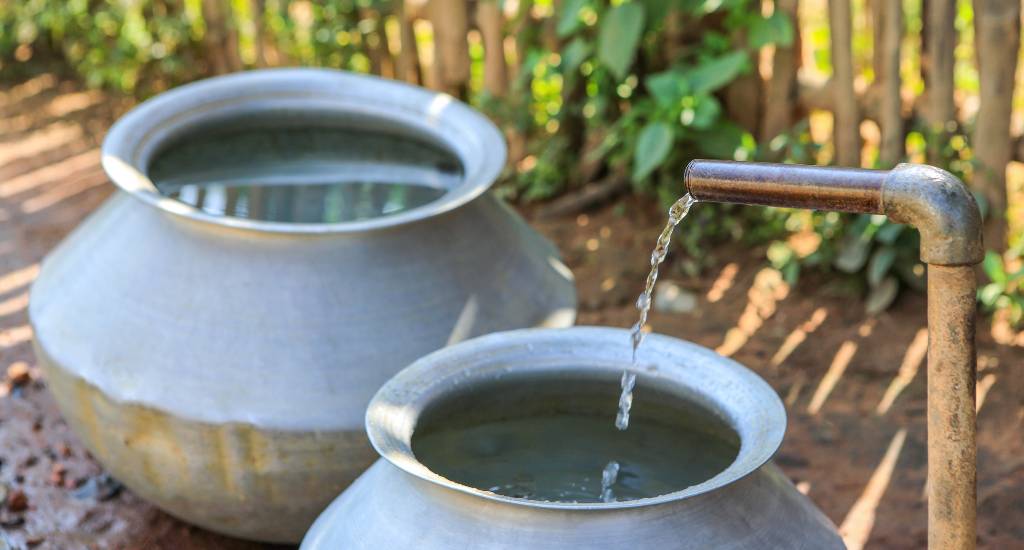
Simple tech to solve water distribution woes
An innovative shaft-based technology promises to transform water distribution, ensuring every household gets its fair share regardless of supply timing.

An innovative shaft-based technology promises to transform water distribution, ensuring every household gets its fair share regardless of supply timing.
Imagine waking up every day uncertain about when your next supply of water will arrive. In many parts of India, especially in remote areas, water distribution problem is a dreadful reality.
Water doesn’t flow from the tap whenever it’s needed, it instead arrives in unpredictable bursts, causing families to scramble to collect as much as possible. But what if a simple technology could solve this problem, ensuring that every household gets its fair share, regardless of when the water arrives?
That’s exactly what the Rural Technology Action Group (RuTAG) at IIT Bombay, in collaboration with Ajivam Water Private Ltd, has achieved. Their shaft-based technology is set to revolutionise the water distribution system, bringing relief to countless communities that have struggled with unequal water supply for years.
In many towns and villages water is not available around the clock. Instead, it is supplied irregularly, which often leads to a frantic rush among residents to store as much water as possible whenever it becomes available.
Also Read: Water availability and quality in rural water supply

This rush causes several issues in the water distribution system, including unequal supply, varying water pressure and air pockets in the pipelines that further disrupt the flow.
Traditional methods, such as using large overhead tanks, do not adequately address these problems. They require significant land and heavy pumping, and still result in pressure drops as water travels to the farthest households.
The collaboration between RuTAG at IIT Bombay and Ajivam Water has resulted in a smart and efficient solution to the challenges posed by irregular water supply. The system is built around a shaft comprising two vertical pipes. The space between these pipes, known as the annular space, acts as a hydraulic separator. This space helps maintain the necessary hydraulic head, ensuring that water pressure is consistent throughout the distribution network, even at the farthest points.
Also Read: Battling social fault lines in rural water supply

What makes this technology particularly innovative is its ability to remove air pockets from the water. Air pockets are a common cause of pressure fluctuations and interruptions in water flow. By creating a hydraulic barrier between the inlet and outlet, the shaft-based technology ensures that water is evenly distributed across all households, regardless of their location or distance.
This system is more efficient, and requires less land and infrastructure compared to conventional water storage tanks.
The shaft-based technology developed by RuTAG at IIT Bombay and Ajivam Water aligns with the United Nations’ Sustainable Development Goal of ensuring clean water and sanitation for all. Once the technology gets implemented, residents no longer have to worry about when the water will come or whether they will get their fair share.
The system effectively reduces over-withdrawal of water, which is a common problem in areas with intermittent supply. With this technology, water is not just a resource but a reliable service that reaches everyone equally.
Also Read: Solar-powered water supply eases women’s struggles

This innovation is particularly beneficial for remote areas, where conventional water distribution methods are often inadequate. The ability to provide consistent water pressure throughout the distribution network means that even the last household on the line receives enough water, helping to improve overall quality of life.
The potential for the technology’s widespread adoption in both rural and urban areas is significant. While the cost of installation varies depending on the size of the shaft, the long-term benefits in terms of water savings, reduced infrastructure needs and improved equity in water distribution make it a worthwhile investment.
In the near future, we can expect to see more communities benefiting from this water distribution solution, ensuring that clean water reaches every household no matter how remote.
This transformative approach has the potential to revolutionise water distribution in India, bringing us one step closer to a future where clean, reliable water is accessible to all.
Also Read: Ladakh’s age-old chuspon water-use system gives hope
The lead image on top shows a common tap in a village in Bastar, Chhattisgarh. (Photo from Shutterstock)